
As its latest release for PC builders, the NZXT H9 is a dual-chamber PC case that offers massive expandability and glass on the front and side to showcase the internals of a build. Starting at $160 for the H9 flow and $240 for the RGB-laden H9 Elite, it’s the new top-of-the-line from NZXT. We got our hands on one with a few other new components to showcase the building process including a PNY RTX 4070ti. Be sure to hit the video below to see all of the details.
Choose your configuration
The NZXT H9 comes in a few different flavors. The Flow variation features mesh across the top for additional airflow and comes with four non-RGB fans. The Elite version, on the other hand, focuses on aesthetics and replaces the top mesh with an additional glass panel to show off what the PC is made of. The Elite also comes with three RGB fans, a single non-RGB fan, and an RGB and fan controller to handle the RGB.
As with NZXT’s other cases like the H5 Flow, we went hands-on with, both versions of the H9 come in either black or white. For this build, we used a white H9 Flow.
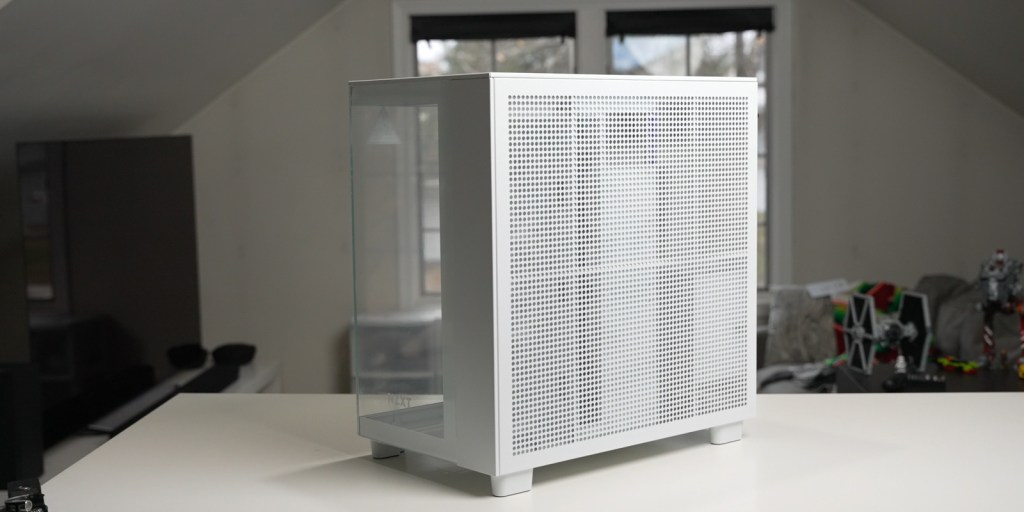
Why so big?
Measuring 495 mm tall, 290 mm wide and 466 mm deep, the H9 will take up some significant space on a desk. Rather than a minimalist build like NZXT’s own H1, the H9 is meant to give lots of room for activities.
One such feature is the dual-chamber design that places the PSU on the backside of the motherboard rather than the more common position at the bottom of the case. That gives more room in the main chamber to show off key components like a GPU.
NZXT H9: Video
That second chamber also gives more room for running cables and mounting fans. The NZXT N9 can support up to 360 mm radiators at the top, side, or bottom of the case as well as a 120 mm at the rear. There is plenty of headroom above the motherboard for mounting a radiator and running all of the necessary cables – which would be nearly impossible on something like the H5.
Mount everything
For creators, the H9 can also house four 2.5 SSDs and 2 3.5 HDDs. While gamers might not have a need for all of this expandability, as a creator, there are times when having a 3.5 drive is very useful, and I’m all about having the room to add one if needed.
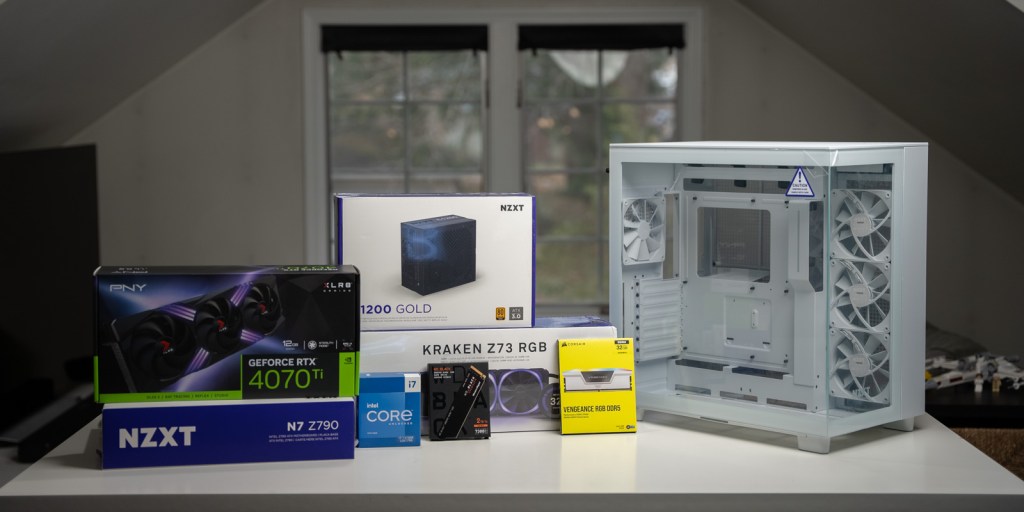
Components in this NZXT H9 build
For this build, I aimed for an upper-mid-tier gaming computer. Here are some of the specs:
- Motherboard: NZXT N7 Z790 buy it here
- CPU: Intel 13700K buy it here
- Cooler: NZXT Kraken Z73 RGB buy it here
- RAM: Corsair Vengeance 32GB DDR5 6200MHz buy it here
- PSU NZXT C1200 buy it here
- GPU: PNY XLR8 RTX 4070ti buy it here
- WD_Black SN850X M.2 NVME buy it here
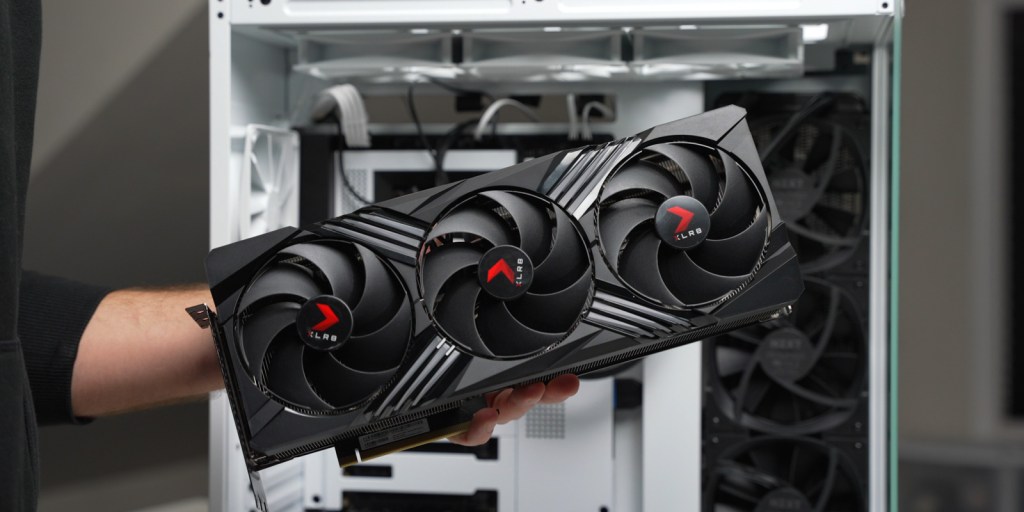
GPU: PNY XLR8 RTX 4070ti
For the GPU, we’re using the PNY XLR8 RTX 4070ti. This card was just announced at the beginning of the month and has been a powerhouse for the 1440p gaming that I usually do. With everything maxed out on Battlefield 2042, I was easily getting around 160fps on a 64 v 64 conquest server. On Warzone 2, once again with everything maxed out, I was also getting between 160 and 200fps with DLSS set to quality.
In the benchmark mode of Forza Horizon 5, I had all settings maxed out and was getting over 100fps. Overall, I was very happy with the performance of this GPU.
Unfortunately, it is a pricey card, though. Coming in at $840 for the standard version or $860 for the overclocked model, it’s a pretty penny to fork over for a GPU. If you’ve been holding off on upgrading for a while and have some money saved up, this card has been great for my 1440p gaming.
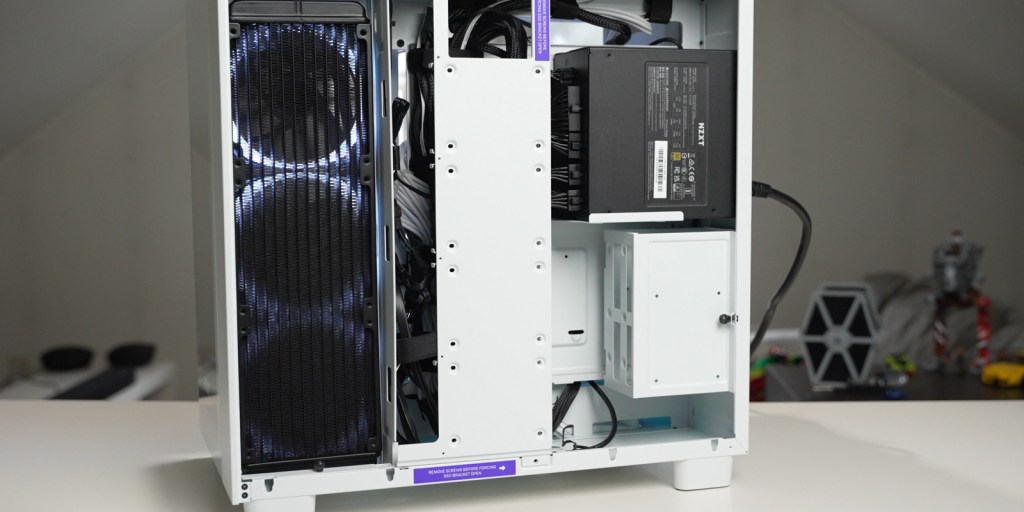
In-use
With everything set up, the NZXT H9 is a quiet case. The only time that the fans and noise ramped up was when I was doing the CPU stress test.
That also brings us to thermal numbers. Using the Heaven benchmark, the GPU reached 100% load for 10 minutes and was hanging out at around 50°C – perfectly acceptable. The CPU, on the other hand, was a different story. Running Prime95, with the CPU at 100% load for about 10 minutes. the CPU temp was up around 83°C which is just on the brink of the danger zone of around 90°C.
Now, in normal gaming use, the CPU usually stayed at around 55°C. So while I wasn’t concerned about the real-world numbers, that stress test number was a bit alarming.
I don’t necessarily think that is the case’s fault but I wanted to make mention of those thermal numbers.
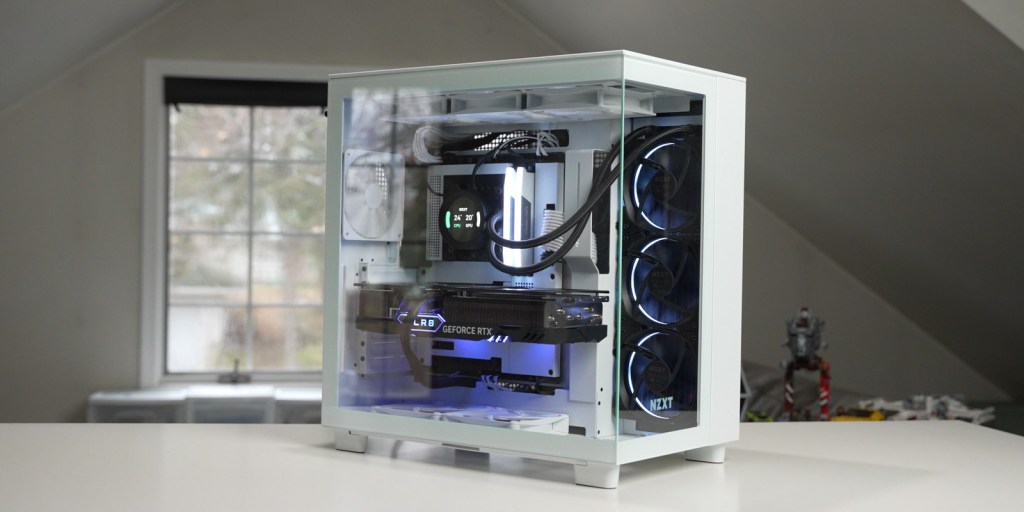
9to5Toys’ Take
Overall, if you need a big, beautiful case to showcase your hardware and have ample room for expansion, the NZXT H9 is a great option. I love how it looks. I also found it to be easy to build in with all of that ample room. I spent some time on cable management but if that’s not your thing, you don’t actually need to do it. It’s easy to hide any messy cables behind the SSD mounting bracket and just pop that side cover back on. With the H9, I feel that as a gamer and content creator, this is a case that I’ll be able to use for a long time thanks to how adaptable and expandable it is. Though, I do think I need to add some more RGB fans to really show off the internals.
Buy NZXT H9
FTC: We use income earning auto affiliate links. More.




Comments